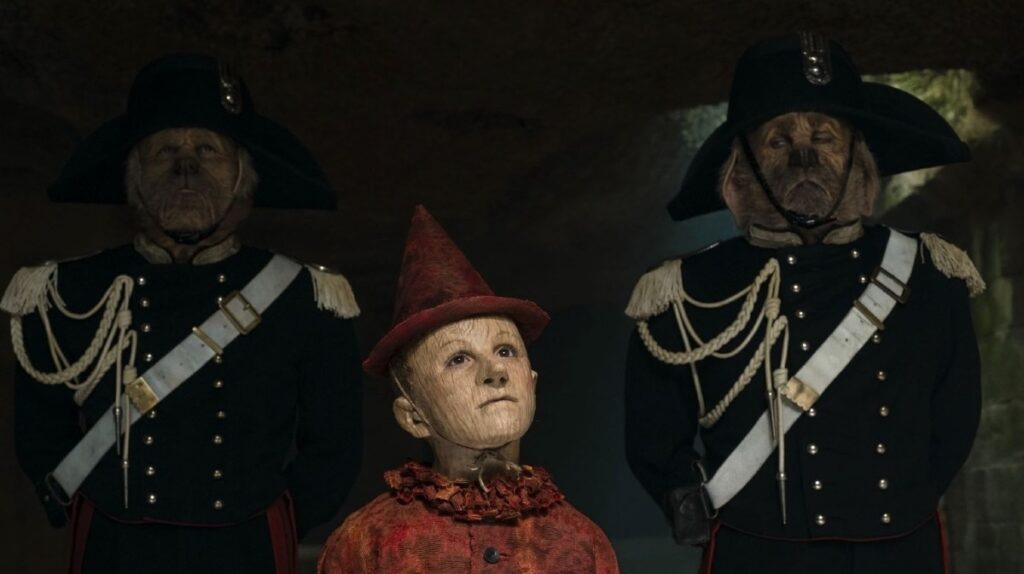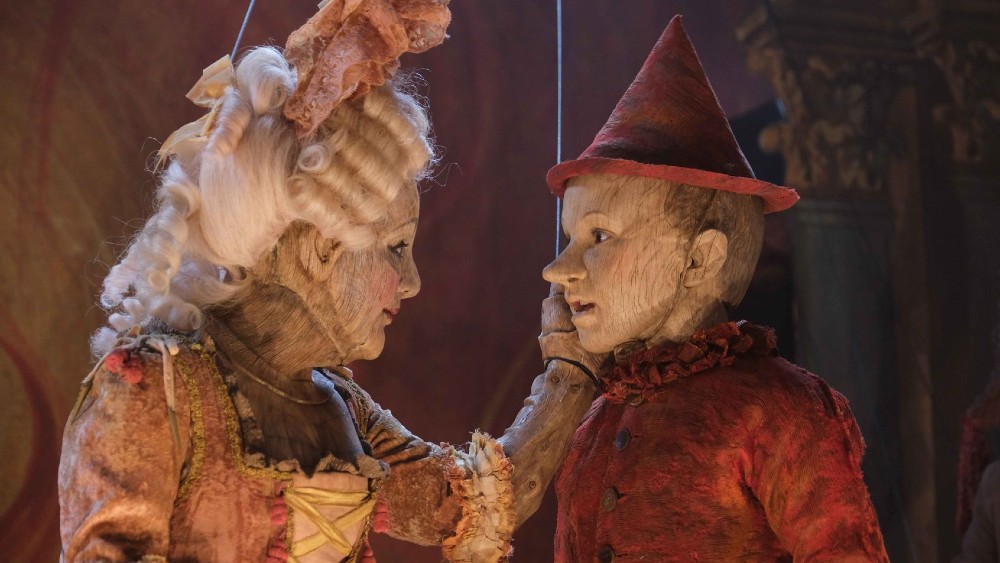 Many craft branches of the Academy are famous for looking outside the cadre of Best Picture contenders to find work to reward with nominations. The Make-up and Hair Styling Branch of the Academy is perhaps the most notable for this approach. When the 93rd Academy Award nominations were announced on March 15th, some were surprised to see the name of an Italian film they had not even heard of netting not one but two craft nominations—one for costumes and the other for make-up and hair styling.
Many craft branches of the Academy are famous for looking outside the cadre of Best Picture contenders to find work to reward with nominations. The Make-up and Hair Styling Branch of the Academy is perhaps the most notable for this approach. When the 93rd Academy Award nominations were announced on March 15th, some were surprised to see the name of an Italian film they had not even heard of netting not one but two craft nominations—one for costumes and the other for make-up and hair styling.
In Matteo (Dogman, Gomorrah) Garrone’s adaptation of Pinocchio, the classic Italian story from the 19th Century, we follow the adventures of a wooden puppet that comes to life after his carpenter father Geppetto (Oscar winner Roberto Benigni) carves him out of an enchanted piece of wood. In this live action adaptation, we re-encounter the various characters from the original tale—including the little wooden boy and many other wooden puppets, his aging creator/father, a fairy, the evil “Mangiafuoco” (who tricks Pinocchio into becoming a donkey), a cat and a fox, and a talking cricket. All of these characters are played by human actors with little to no CGI to enhance their features. Instead, the film makers relied on an impressive array of prosthetics, heavy makeup, and hair, to give them their distinctive features.
The result — which includes making a real boy look like he is actually made of wood — is one of the most stunning and comprehensive make-up effects one has seen in a movie in a few years, making their Oscar nomination a no-brainer.

Below the Line spoke to the team—makeup artist Dalia Colli, hairstylist Francesco Pegoretti, and prosthetic makeup designer Mark Coulier—about the work they did for this impressive Italian production. This interview took place the day before they found out they were Oscar nominees.
Below The Line: Please tell us how you got involved in this movie and how you started thinking about creating the characters through your work?
Dalia Colli: I met Matteo Garrone in 2007 when he started to shoot Gomorrah. I worked with him on that and also Dogman, and so he asked me to work on this film as well. We started to speak about this project three years before we began shooting. I was in charge of all the characters other than Pinocchio. Matteo wanted total reality for the characters, which is a paradox because this is a fairytale.
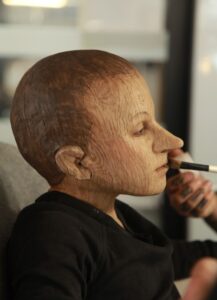 So take a look at the makeup of Geppetto, who is a very sweet character. He appears at the beginning of the story as a simple carpenter, with skin blackened by the poverty and the cold. His place is dirty and old. Later, his appearance changes when he gets trapped in the belly of the whale and becomes an integral part of the beast. When I was a child and read the book, I was very scared in this part. In the original book there are a lot of stylized, terrifying ink drawings. I wanted to recreate and remember this feeling of fear and anxiety through the makeup. This is why I made Geppetto an integral part of the whale by changing the makeup tone from the black to green. He slowly becoming fishlike, more wet, with microorganisms becoming a part of his skin.
So take a look at the makeup of Geppetto, who is a very sweet character. He appears at the beginning of the story as a simple carpenter, with skin blackened by the poverty and the cold. His place is dirty and old. Later, his appearance changes when he gets trapped in the belly of the whale and becomes an integral part of the beast. When I was a child and read the book, I was very scared in this part. In the original book there are a lot of stylized, terrifying ink drawings. I wanted to recreate and remember this feeling of fear and anxiety through the makeup. This is why I made Geppetto an integral part of the whale by changing the makeup tone from the black to green. He slowly becoming fishlike, more wet, with microorganisms becoming a part of his skin.
I really enjoyed this makeup. We applied one cap so that Francesco could apply his wigs, and then we added layers to make him look aged, and even more so as he loses Pinocchio. I tried to create some prosthetics for his hands to make them look very coarse like a carpenter. We tried to make them appear more worn. We ended up abandoning this idea because of lack of time.
Francesco Pegoretti: I worked with him on A Tale of Tales in 2014. It required creating a lot of new characters, and it was a great experience for both of us, so he called me for this film. I started studying the original story and its illustrations as the first step. Matteo asked me to create a poor world—to feel the poverty in the characters. I started studying from the painters of this period in the 19th Century, with old pictures. We used a lot of wigs and hairpieces to recreate the fantasy characters and the human characters.

Mark Coulier: I got a call from production, and I spoke to Matteo and I found out it was his passion project. He did a storyboard of it when he was about 10 years old. I knew it was close to his heart, and I love fairytales and the chance to bring these kind of characters to life. I went back to the original illustrations, and there were so many characters that have not been seen in other versions of Pinocchio that we were going to show more of, all the anthropomorphic characters, especially all the characters wearing prosthetics for the wood.
BTL: Let’s start with the principal character—Pinocchio—how did you create him?
Coulier: Applying the makeup for an 8-year-old boy was going to be a big deal. We did it 50 times in the end, and it was 2.5 to 3 hours each time. They decided to do the hands as prosthetics rather than gloves because they look thinner and more realistic, so that added to the time. It was quite difficult. Doing a 20-minute makeup for Halloween is quite challenging.
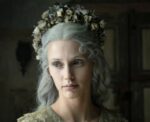
The most difficult part though was making silicon to look like wood. It took us a while to work out the right texture to make it look like real wood. It’s all sculpted in clay first. We had a 3D printer to get him the right expression, particularly around the mouth area so that it was not distorted. You can get a look that seems very uncomfortable in the light, with the cast you get in the end. We wanted an expression that was not quite smiling but content.
We got a real piece of wood sent over for the color and grain reference. We copied that slavishly. It took four or five months of work to do the Pinocchio sculpture in clay. We did it in clay and then molds to create the prosthetic pieces. We ended up with a quite beautiful and realistic looking mask. We found that if you put too much texture when you colored it, it looked too fake. We wanted it to be real wood.
BTL: Tell us about how you made up the fairy?
Colli: It was mostly white makeup. We needed a type of skin and type of hair that was very light to make her look very pale. I wanted to use a brighter color palette for the fairy. I wanted her to be a romantic character in a way. My inspiration was [Hamlet’s] Ophelia and also Gustaf Klimt canvasses because he was a master of painting skin. I realized that the skin has a lot of colors mixed in, and I wanted to give that to my fairy. Matteo asked me for someone beautiful and realistic which, again, was challenging, but this is what we went for with the colors. A romantic Ophelia.
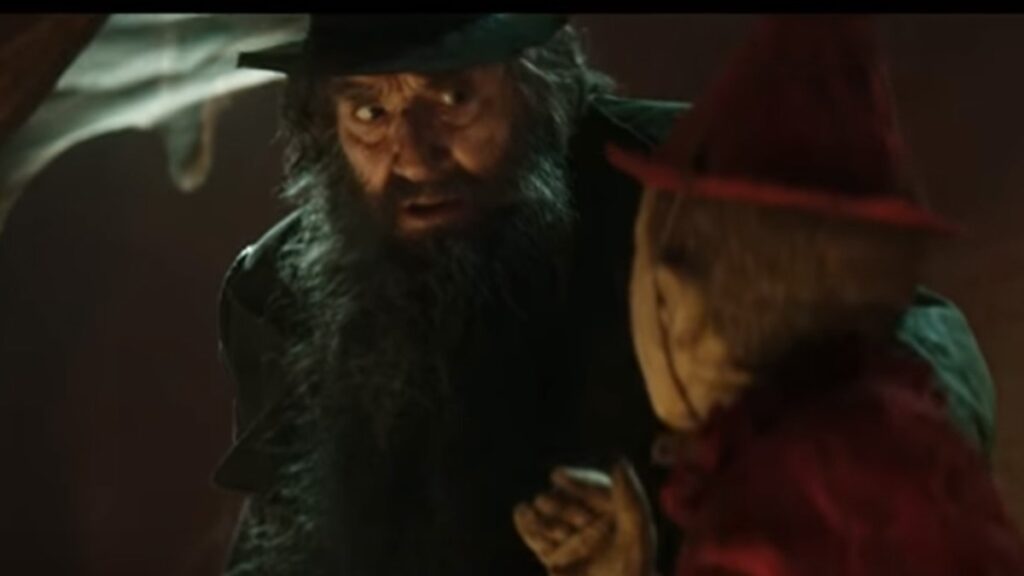
BTL: What about the evil Mangiafuoco—how did you create him?
Colli: There is a very scary image of him in the book. I was very scared of him because I did not understand what type of man he was. I wanted to create my own version of him. He had a very long beard. We created a beard divided into 5 pieces. After that, I wanted some sign on his face that spoke of his life spent on this street doing his hustling. Some we put some scars under the eyes of the actor. I didn’t want it to be too scary, but just nostalgic. Unfortunately, the actor passed away after the shooting.
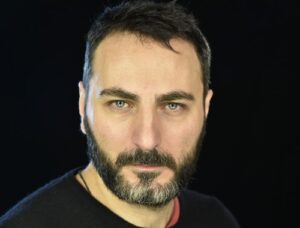
BTL: Describe the different wigs and hairs you used for all these characters?
Pegoretti: For Benigni we used two different wigs to create the grey hair, short at the beginning, longer in the second part of the movie. The important thing was to keep the poverty in their hair—messy, unkept, but natural.
For the animal characters like the fox and the cat I used wigs that mixed animal and human hair together, to create the texture of real animal hair. It was red for the fox and black and white for the cat. The idea was to keep the colors from the original story. For the puppets we recreated the wigs using traditional wigs of the time, using animal hair, and colored with fabric coloring. The texture was very old-style Italian Art.
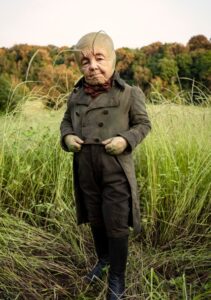 For the fairy, she was supposed to be monochromatic, so not a lot of color. When she is young, the idea was to recreate Victorian style so we used those wigs, but we put dust and ash in her hair because she was ghost-like. We also made a flower crown for her with vintage fabric flowers, for when she is young. When she has become a woman, she has to be a little more natural, with longer hair.
For the fairy, she was supposed to be monochromatic, so not a lot of color. When she is young, the idea was to recreate Victorian style so we used those wigs, but we put dust and ash in her hair because she was ghost-like. We also made a flower crown for her with vintage fabric flowers, for when she is young. When she has become a woman, she has to be a little more natural, with longer hair.
BTL: How did the cricket character come about?
Coulier: Originally it was going to be an animated character, but Matteo is very performance-driven. This is why we kept human eyes in the puppet characters too. My friend Duncan Jones sculpted his makeup and built antennas into the prosthetic that he created. Those were digitally augmented so that they could twitch a bit. It was very similar to the snail suit—the antenna were digital.
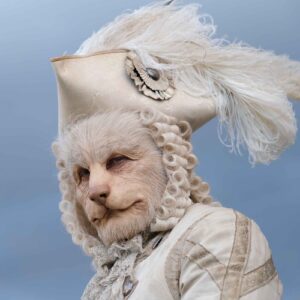 BTL: What was your favorite part of working on this film?
BTL: What was your favorite part of working on this film?
Coulier: The chance to bring a classic Italian fairytale to life, working with Italian people who have a passion for the project like Dalia and Francesco. Nearly every Italian person has had this story read to them in their childhood. To do this for an Italian director who had a sensitivity for him was a pleasure. We ended up with a team of 53 prosthetics people, and maybe another 30 makeup people. It was a big job—I was on the film over 56 weeks, and it was not a huge budget movie. It ends up being very rewarding, but also a credit to all the people who don’t get mentioned behind the scenes. There’s probably another 70 just in the hair and makeup department.
Colli: I was excited and nervous to work with Mark for the first time—I did not know what he would think of my work—and the collaboration we all had was amazing. I really enjoyed it. I also wanted to find something new for Matteo’s Pinocchio. Again, I focused on what I felt when I was a child, like in my memory as a child. I had the fox and cat be evil and scary. They were the biggest challenge—to mix my work with my memories, and the prosthetics Mark prepared. They ended up being so perfect, I forgot the actors had prosthetics when I was putting on the makeup. That was very enjoyable.
Pegoretti: It was very challenging but the collaboration with Mark and everyone else stood out. Everyone knows the characters and to create something new was challenging but also rewarding. I am so happy with how it turned out and I really want to thank Matteo.
BTL: How will you feel if you end up in the final list of five nominees?
Colli: [Laughs nervously]
Coulier: It will be amazing! We will be drinking digital champagne!
Colli: I will drink it if we don’t get it too!
Pinocchio was released in Italy in December, 2019, and in the United States on Christmas Day, 2020. It’s available for rental on Amazon Prime Video and YouTube, as well as other platforms.
